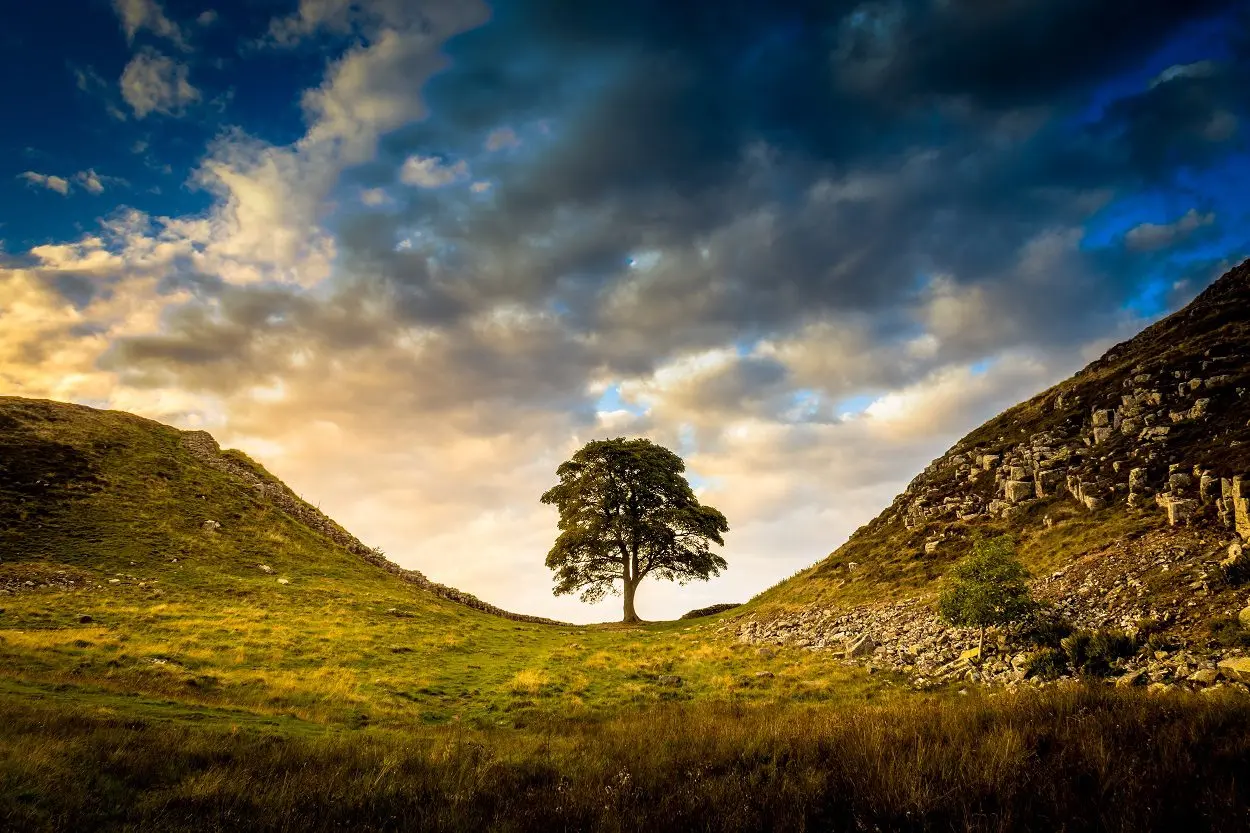British police have arrested a 16-year-old boy on suspicion of felling one of Britain’s most iconic trees at Whin Sill Gap on Hadrian’s Wall.
Known as the Sycamore Gap Tree, it has grown on the Roman frontier fortification for hundreds of years between Milecastle 39 and Crag Lough, about 1.9 miles west of Houseteads Roman Fort.
This section of the Roman wall is one of the most visited by tourists, where the tree has been described as the “most photographed tree in the country”.
The National Trust which manages the site said: “We are shocked and desperately saddened to learn that the famous Sycamore Gap tree at Hadrian’s Wall has been felled overnight, in what appears to be an act of vandalism. We know just how much this iconic tree is loved locally, nationally and by everyone who has visited. We are working with our partners to understand what has happened and what can be done.”
The tree was featured in the 1991 movie, Robin Hood: Prince of Thieves, as well as the music video for the song, (Everything I Do) I Do It for You. In 2016, the tree won England’s Tree of the Year competition and came 7th in the 2017 European Tree of the Year.
Superintendent Kevin Waring, of Northumbria Police, said: “This is a world-renowned landmark and the events of today have caused significant shock, sadness and anger throughout the local community and beyond.
Northumbria Police advised that they have launched a probe and arrested a 16-year-old boy who remained in custody this afternoon and was assisting officers with inquiries.
“Anyone found to have been responsible for this damage – which we believe to be a deliberate act of vandalism – can expect to be dealt with swiftly and appropriately,” said Northumbria Police.
Header Image Credit : Shutterstock





